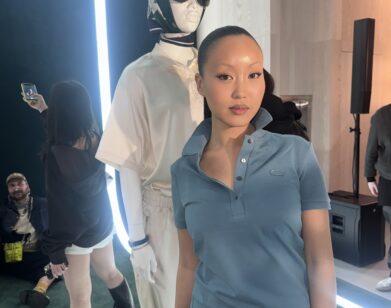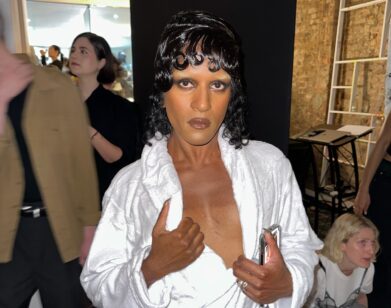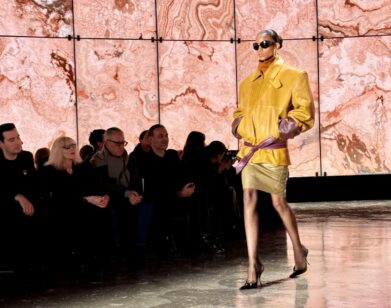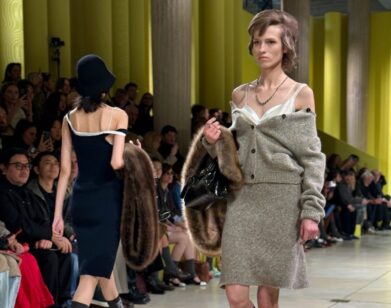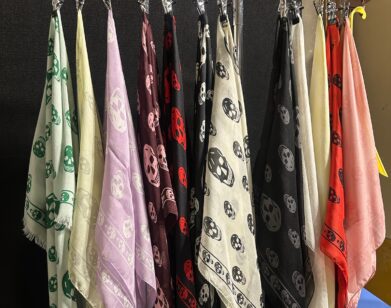Simon Spurr
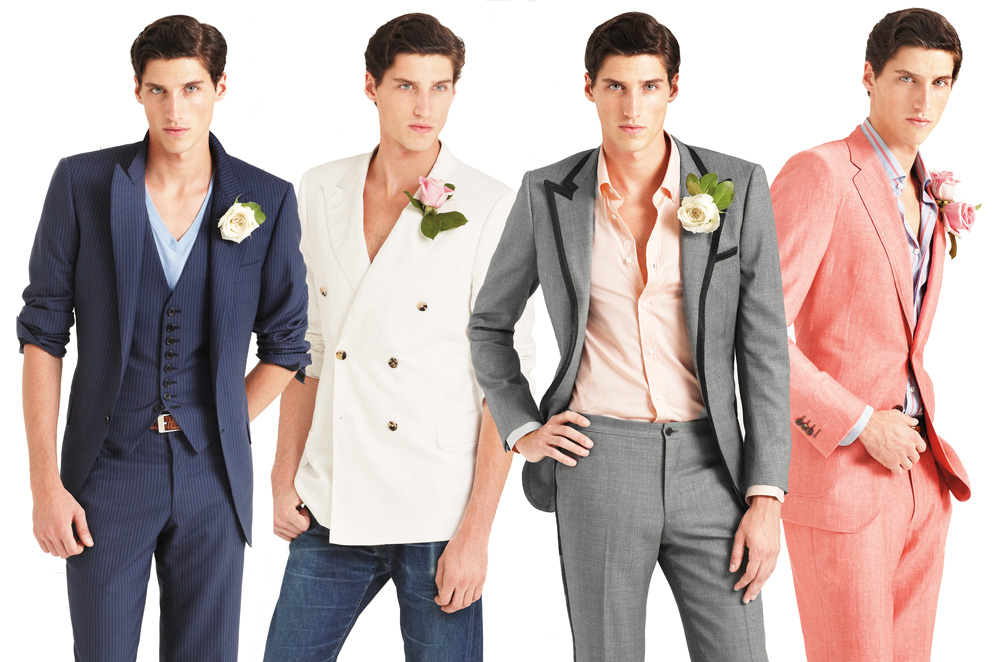
There’s still a certain civility to menswear. Whereas women’s collections so often become enveloped in a front-row frenzy, a paparazzi free-for-all, and full-tilt after-party mania, the showing and selling of men’s clothes remains a much more staid, methodical affair. And that’s just the way Simon Spurr, the English-born, New York–based menswear designer, likes it. Formally trained at Ralph Lauren, Calvin Klein, and Yves Saint Laurent before launching his own label, Spurr, in 2006, the 35-year-old designer is one of the driving forces behind American menswear’s return to simple, well-tailored fashion. In fitting form, Spurr himself has patiently and meticulously built his label one stitch at a time. He started out in denim and has branched out to a full-range collection, including suits, shirts, accessories, bags, and gloves. He quickly became a favorite of stylists and editors, and this summer he was nominated for the CFDA/Vogue Fashion Fund Award (the winner was announced November 16). For spring 2010, he took inspiration from old Helmut Newton pictures for silhouettes, and David Bowie albums and Jimi Hendrix’s stage costumes for a color palette, creating a collection that’s solid and cohesive yet sexy enough to merit its rock inspiration. Such a malleable look should sell well in an economy that hasn’t been particularly easy on men’s luxury goods. “We haven’t seen much of a difference—we’ve been growing steadily, and our orders haven’t gone down,” Spurr says from his home office on Manhattan’s Upper West Side. “Knock on wood.”
DEREK BLASBERG: I heard you just got married. Congratulations!
SIMON SPURR: Ah, thanks. It was about a week ago, and it seems so surreal.
BLASBERG: It was just after you presented your spring collection.
SPURR: It’s been a crazy few months. The show, the wedding, and the award nomination . . . On top of it all, I’m moving. But first my wife’s mother surprised us with a honeymoon to Guatemala, which was great. Got away from the e-mails and the phone calls for a few days.
BLASBERG: I hear the lucky lady is a doctor. I take it you don’t have much crossover with work.
SPURR: Thankfully, no. Not anymore. But before she became a medical resident, she studied art history, so there’s some common ground there. And she has excellent taste—and I’m not referring to her taste in men.
BLASBERG: But still, not the same sort of work.
SPURR: Yes, and that can be quite humbling. She’ll come home and say she’s saved a life, and I’m worried about dressing someone. She saved a baby, and I just cut a great lapel.
To make a perfect t-shirt is hard—all you have is white cotton and fit. that’s where experience comes in.Simon Spurr
BLASBERG: There is a novelty to a handsome straight man working in fashion. What are some of the lessons you’d like to teach your heterosexual brethren who don’t work in fashion?
SPURR: I’d like to teach them about fit and cut. I like to think of us as a more European-fit American brand, and invariably, when you go to Savile Row for a suit, you’ll find that the suit fits you like a glove. That’s how it should fit: form to your body. Especially here in the States, men have to really understand the importance of that fit. If I’m dressing a friend, I’ll usually give him a size down from the one he’s asked for; he’ll think it’s too small, but after a while he gets it.
BLASBERG: Before you started your own line, you worked for a handful of menswear masters, like Ralph Lauren, Calvin Klein, and Hedi Slimane during his tenure at Yves Saint Laurent. What did you learn at those places?
SPURR: I learned something distinctive from each one. From Hedi, I learned to disregard trends and focus on my own sense of proportion and color. At Calvin, it was this purist, modern, less-is-more, take-stuff-off idea—Calvin wanted a simple backbone and not much else. And then from Ralph,
I started to understand what it meant to build a brand. There were times when I was working there that it seemed so repetitive. At the time, I didn’t understand what was happening. But when I stepped out of it, I realized what he was doing was achieving a signature look and reiterating that. That’s why when you think about a polo shirt you think about Ralph—he owns that garment.
BLASBERG: Despite being an Englishman, do you identify with the American fashion industry?
SPURR: What’s great is that there are a lot of brands—like Thom [Browne], Michael [Bastian], and Rag & Bone—but they’re all doing their own thing. That’s what’s important: to remain true to your own DNA. Rag & Bone cornered the work-wear market. Thom has that whole short-pant thing, and whenever I see someone else do it, I’m always thinking, Why would they do Thom’s thing? It’s an impressive achievement. With Spurr, I like to think we’re a modern, European-influenced brand that does luxurious, handcrafted, and wearable pieces.
BLASBERG: Your PR rep sent me a bunch of pictures of you with some famous people at your New York presentation. How do you look at this current relationship between celebrity and fashion?
SPURR: It’s new to me. When I started, I had that naïve mentality that you shouldn’t have to dress celebrities if your product is good. But when you’re an emerging brand and you don’t have millions for advertising and marketing, it’s a good vehicle to penetrate the demographic that doesn’t read GQ—or Interview. But if they see Milo [Ventimiglia] in one of my leather jackets in Us Weekly, that’s a new audience for me.
BLASBERG: What I particularly like about your clothes is the simplicity. No bells and whistles needed. A designer once told me it’s harder to do more with less.
SPURR: I prefer a much more scaled-back version of the entire operation—even in the way we show the collection in a presentation. There are so many fashion shows during fashion week, and the fashion show has almost become theater. It’s all about the wow factor. And it’s easy to make a name when you’re shocking people all the time. But when you just make really, really great clothes, it can be difficult to get press and build a brand. What you do when you pare things back and make something timeless, though, is build a foundation to have a longer career and a stronger clientele. To make a perfect T-shirt is hard—all you have is white cotton and fit. That’s where experience comes in.
BLASBERG: So it’s continual experience, continual learning.
SPURR: Exactly. I’ll never know—I’ll never profess to know—anything anywhere near it all. It’sall a journey—life, work, and relationships. Mistakes and learning, and learning not to make your mistakes again.
Photos: Simon Spurr in New York, July 2009. All clothing: SPURR. Tie clip and pocket square: Barney’s New york. Grooming Products: Aveda Men, Including Pure-formance liquid pomade. Fragrance: Aqva Pour Homme by BVLGARI. Styling: Alastair McKimm/Streeters. Grooming: Sil Bruinsma/Streeters. Special Thanks: Fast Ashleys.
Spurr Spring 2010 looks. Photos: gavin bond.
Derek Blasberg is a New York–based fashion journalist and writer. He is one of V magazine’s senior editors and a contributing editor at style.com.

